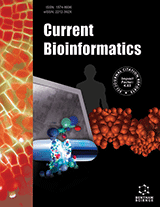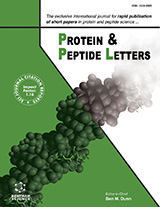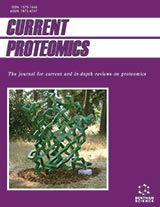Abstract
Background: The Gene Regulatory Network (GRN) is a model for studying the function and behavior of genes by treating the genome as a whole, which can reveal the gene expression mechanism. However, due to the dynamics, nonlinearity, and complexity of gene expression data, it is a challenging task to construct a GRN precisely. And in the circulating cooling water system, the Slime-Forming Bacteria (SFB) is one of the bacteria that helps to form dirt. In order to explore the microbial fouling mechanism of SFB, constructing a GRN for the fouling-forming genes of SFB is significant.
Objective: Propose an effective GRN construction method and construct a GRN for the foulingforming genes of SFB.
Methods: In this paper, a combination method of Long Short-Term Memory Network (LSTM) and Mean Impact Value (MIV) was applied for GRN reconstruction. Firstly, LSTM was employed to establish a gene expression prediction model. To improve the performance of LSTM, a Particle Swarm Optimization (PSO) was introduced to optimize the weight and learning rate. Then, the MIV was used to infer the regulation among genes. In view of the fouling-forming problem of SFB, we have designed electromagnetic field experiments and transcriptome sequencing experiments to locate the fouling-forming genes and obtain gene expression data.
Result: In order to test the proposed approach, the proposed method was applied to three datasets: a simulated dataset and two real biology datasets. By comparing with other methods, the experimental results indicate that the proposed method has higher modeling accuracy and it can be used to effectively construct a GRN. And at last, a GRN for fouling-forming genes of SFB was constructed using the proposed approach.
Conclusion: The experiments indicated that the proposed approach can reconstruct a GRN precisely, and compared with other approaches, the proposed approach performs better in extracting the regulations among genes.
Keywords: Gene regulatory network, long short-term memory, particle swarm optimization algorithm, mean impact value, slime-forming bacteria, yeast gene data, machine learning.
Graphical Abstract
Current Bioinformatics
Title:Gene Regulatory Network Construction Based on a Particle Swarm Optimization of a Long Short-term Memory Network
Volume: 15 Issue: 7
Author(s): Zhenhao Tang*, Xiangying Chai, Yu Wang and Shengxian Cao
Affiliation:
- School of Automation Engineering, Northeast Electric Power University, Jilin,China
Keywords: Gene regulatory network, long short-term memory, particle swarm optimization algorithm, mean impact value, slime-forming bacteria, yeast gene data, machine learning.
Abstract:
Background: The Gene Regulatory Network (GRN) is a model for studying the function and behavior of genes by treating the genome as a whole, which can reveal the gene expression mechanism. However, due to the dynamics, nonlinearity, and complexity of gene expression data, it is a challenging task to construct a GRN precisely. And in the circulating cooling water system, the Slime-Forming Bacteria (SFB) is one of the bacteria that helps to form dirt. In order to explore the microbial fouling mechanism of SFB, constructing a GRN for the fouling-forming genes of SFB is significant.
Objective: Propose an effective GRN construction method and construct a GRN for the foulingforming genes of SFB.
Methods: In this paper, a combination method of Long Short-Term Memory Network (LSTM) and Mean Impact Value (MIV) was applied for GRN reconstruction. Firstly, LSTM was employed to establish a gene expression prediction model. To improve the performance of LSTM, a Particle Swarm Optimization (PSO) was introduced to optimize the weight and learning rate. Then, the MIV was used to infer the regulation among genes. In view of the fouling-forming problem of SFB, we have designed electromagnetic field experiments and transcriptome sequencing experiments to locate the fouling-forming genes and obtain gene expression data.
Result: In order to test the proposed approach, the proposed method was applied to three datasets: a simulated dataset and two real biology datasets. By comparing with other methods, the experimental results indicate that the proposed method has higher modeling accuracy and it can be used to effectively construct a GRN. And at last, a GRN for fouling-forming genes of SFB was constructed using the proposed approach.
Conclusion: The experiments indicated that the proposed approach can reconstruct a GRN precisely, and compared with other approaches, the proposed approach performs better in extracting the regulations among genes.
Export Options
About this article
Cite this article as:
Tang Zhenhao *, Chai Xiangying , Wang Yu and Cao Shengxian , Gene Regulatory Network Construction Based on a Particle Swarm Optimization of a Long Short-term Memory Network, Current Bioinformatics 2020; 15 (7) . https://dx.doi.org/10.2174/1574893614666191023115224
| DOI https://dx.doi.org/10.2174/1574893614666191023115224 |
Print ISSN 1574-8936 |
| Publisher Name Bentham Science Publisher |
Online ISSN 2212-392X |
 12
12
- Author Guidelines
- Bentham Author Support Services (BASS)
- Graphical Abstracts
- Fabricating and Stating False Information
- Research Misconduct
- Post Publication Discussions and Corrections
- Publishing Ethics and Rectitude
- Increase Visibility of Your Article
- Archiving Policies
- Peer Review Workflow
- Order Your Article Before Print
- Promote Your Article
- Manuscript Transfer Facility
- Editorial Policies
- Allegations from Whistleblowers


















.jpeg)








